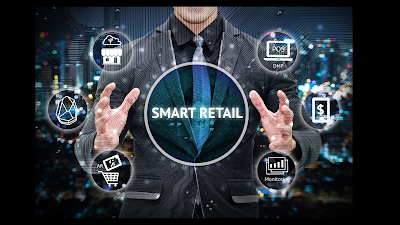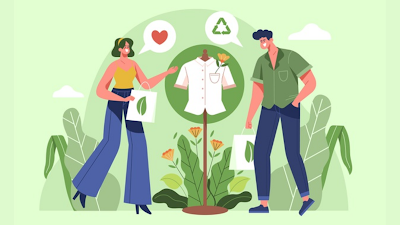creative background ideas for your product photography are nearly endless quantum of background possibilities for your product images. Understanding which is stylish for your brand is just the first step.
Ready to get started? Then are some of our favorite creative background ideas for your eCommerce product photography shoot.
1) VINYL Backgrounds
vinyl backgrounds are one of the most extensively used backgrounds for eCommerce product (and portrayal) photography. You can find different styles of vinyl backgrounds dummy marble. Dummy wood. Solid colour. The list goes on!
pros
they're thick and durable. So they'll hold up to the test of time. This can be a huge plus if you're using liquids or heavy particulars for your product images. Any clangs or tumbles can fluently be gutted up with a wet rag. They also come in a variety of sizes to suit your requirements.
cons
you should make sure you get the right lustre. There are two primary types of homestretches you can get dull and buff. Buff can add some nice reflective rates to your product image – but it can also wash it out if you're not careful.
affordability
vinyl backgrounds do bear a bit more investment than paper backgrounds. But we suppose they're worth it. You can use them time and time again without having to worry about wrinkles or damage. The cost per use will drop dramatically throughout the times that these backgrounds will last.
2) FOAMBOARD
white backgrounds have come the assiduity standard (thanks largely to Bezos and the Walmart fam). But don't let that fool you into allowing that white froth board is the only way to go.
pros
it's time to zhush effects up a little and suppose outside the ( froth board) box with coloured and patterned froth board. You can go wild – or subtle. There's no end to the creative variations of froth board out there. Dummy marble? Velvet? Solid colour? Check. Check. And check.
cons
The froth board can be fluently damaged. This might not be the ideal background for you if you plan on moving it around from shoot to shoot. It also works more for a lower product scale.
affordability
froth board is one of the most affordable background options. So it's not a burden to replace if it gets damaged – or you want to switch up the look with a commodity new!
3) PAPER
flawless paper backgrounds (a.k.a reaches) are one of the most common choices on the request. They come in a variety of colours and patterns/ textures to fit your brand story.
pros
paper backgrounds are great for entry- positions and one-time systems. Plus – there's a nearly endless quantum of colour and pattern options out there. Heck. You can indeed get creative and use old journals and magazines as your background.
cons
they're one of the least durable types of backgrounds and will progress snappily. Slight damages and defects might appear as soon as the first use.
affordability
you get what you pay for with paper backgrounds. They're one of the most affordable background options out there – which is good because you might need to replace them more frequently as they progress.
4) THE BOKEH Fashion
the bokeh background fashion is a fancy way of blurring out the background to make it lower of a focal point. All you need is the right lens to make sure you set your f- stop rightly. This will affect the background being fully blurred.
pros
the bokeh fashion is great for when you don't want to put important trouble into getting your background fixed and ready. It blurs the background so much that it becomes inconsequential. You'll frequently see jewelry brands use this fashion to make the image fully concentrate on the products.
cons
it can be precious to get the applicable camera lens if you don't normally have one. You might also need to concentrate more on setting applicable lighting to ensure your image is impeccably exposed.
affordability
this depends on whether or not you'll need to invest in fresh camera lenses to get the job done. If you've formerly got what you need – it's free. You can anticipate spending around$ 200 –$ 500 for a new lens.
5) FABRIC & CLOTH
Backgrounds fabric and cloth are also generally used as print backgrounds. They're more durable than paper and aren't as reflective.
pros
easy to store. Durable. And they can give further depth to your product images. Try folding them. Layering them. And playing with different textures. It all comes together to help tell your brand story.
cons
wrinkles. Wrinkles. And wrinkles. Make sure you bring the steamer because all of those little wrinkles will show up in the final image.
you generally might also have smaller colour and pattern options than you might with other backgrounds ( i.e. froth board)
affordability
fabric and cloth backgrounds range from free to precious – depending on which variety you go for. Leathers and laces will bring further than cotton or polyester composites.
6) Gravestone OR Beach
it's time that you considered less conventional background options like gravestone and beach. These natural rudiments are protean and easy to handle – which makes them perfect for your coming product shoot.
pros
natural backgrounds like gravestone and beach can give fortitude and depth to your product prints.
Some of our favorite jewelry product prints use gravestone and beach backgrounds to punctuate the fluorescence of the products. Need alleviation? Cartier used the shimmering beach and rugged monuments to show its Cactus de Cartier choker.
cons
these backgrounds are easy to manage – as long as your products are lower in size. They come further of a challenge to arrange and contain on a larger scale.
You can always take your shoot to the sand. But it's another thing entirely to try to bring the sand into your photoshoot space.
affordability
gravestone and beach backgrounds are fluently accessible and budget-friendly. You can find nearly any colour and texture of beach and gravestone that you could imagine.
7) Leafage
go green! Literally AND directly by incorporating shops and green leafage into your product photo shoot backgrounds. You can eventually put those houseplants to good use!
pros
shops bring life to your images and can be a clutch move for environmentally-friendly or eco-conscious products. There's a wide variety of foliage that you can choose from. Live shops. Dried florals. And indeed shrubs & trees. The choice is yours.
Hear up beauty brands you can use shops to emphasize how your organic/ vegan/ nontoxic products will help your guests get their gleam on. Just take a runner out of the Aveda into the book.
cons
some shops are picky about their terrain. This is especially true for some cut flowers. Planning on shooting for many days (or weeks)? Conclude for hardy or artificial shops to keep me looking as fresh on day four as they were on day one.
affordability
leafage runs mid-range when it comes to budget. It's a good choice if you've got a little twitch room in the budget. You can save plutocrat by buying stems or plants in bulk and doing the arranging & baptizing on set.
8) Hairpieces
the very effects that give texture and warmth on cold bottoms can also serve as the perfect photography backgrounds hairpieces!
pros
dummy hide. Shag. Oriental. There's just commodity magical about using these textural beauts to capture your images. They produce a depth and texture that can't be replicated by other types of backgrounds. They're also perfect for makeup product photography.
cons
can be a beast to wrangle. They're not really that flexible, and they're heavy to lug around if your shoots are at different locales. They only come in certain sizes and aren't veritably customizable.
affordability
if you've formerly got the hairpieces you need – great! You're all in for free. But hairpieces can be a bit of a splurge if you're just getting started with this background. You can anticipate paying anything from$ 20 –$ depending on which bone you go with.
9) DECORATIVE Pipe
betcha didn't see this one coming. An Ornamental pipe can be your product's stylish friend. Just head to your original big-box store, and you might indeed score some larger samples for free.
pros
a pipe can add a whole other dimension to your images. Lustrous. Satin. Matte. And in all feathers of textures and patterns. Perhaps your brand is further of a simple shelter pipe. Or go bold with an intricately patterned Morrocan mosaic. The sky's the limit!
cons
a pipe can be heavy and big to work with. It won't inescapably conform to the shape of your background. Pipe's good for flat lays and perpendicular backgrounds but can be clumsy else.
affordability
you can spend a little – or a lot. The beauty of using Pipe is that you can confirm your pipe choice to fit your budget. a Pipe is an affordable option for small-scale operation. But it can get more precious as your background size increases.
10) Bank
go on. Play a game of bank and glasses with your product images. Snare a fog machine, and let's rip in your shoot space for that magically mysterious effect.
pros
fog machines are super easy to come by. and it doesn't take important to maintain them or transport them to a new position. Plus bank gives this inconceivable and incomparable ethereal effect that you won't get from any other background.
cons
you'll need to produce a "vessel" or space to keep your fog in around your products. It's liable to unmask out to the rest of the photoshoot space if you don't corral it a bit.
affordability
relatively priced. But it should last you a continuance. Minimum up-frontal investment with massive returns on the creative deliverables!
11) WALLPAPER & WRAPPING PAPER
yep. You read that right wallpaper and wrapping paper. These kinds of backgrounds come in a wider variety of options than your standard paper or vinyl backgrounds.
pros
they're incredibly protean. They come in nearly endless combinations of colours and patterns. And you might indeed get a little texture thrown in there too. You can go crazy and get custom-made wallpaper made.
cons
can damage or tear fluently. Large sections are delicate to controvert and bear redundant mounting outfits ( i.e. daises and clamps). Can be precious if you go the custom route.
affordability
one cool thing about these types of backgrounds is that you can find a wallpaper or wrapping paper background that fits your budget. You don't need to break the bank – unless you want to go all out.
12) ICE
ice. Ice. baby. this is one of our favorite types of backgrounds because it becomes nearly unrecognizable with the right lighting and staging.
pros
you can convey that sense of terseness of ice. Don't be hysterical to get creative with it. Indurate your products in it or crush it up and make a bed with it. It'll have a scroll-indurating effect no matter which way you go.
cons
ice melts. Snappily. You've gotta work presto with ice or have a backup plan if effects start to melt a little too snappily. Presumably wouldn't work well for an out-of-door shoot in the middle of summer.
affordability
got an ice maker in your freezer? You're all set. Bags of ice are fairly affordable. or you can splurge on custom-moldered ice. There's indeed ultra-clear nice if you're after that demitasse vibe.


















